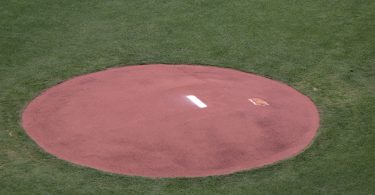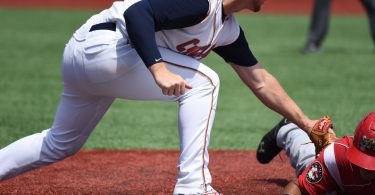By Ethan Guevin
What kind of player do you want to be? How do you want to be remembered on the field? Sure, every coach loves a great player—the guy who can do it all and make it look effortless. But for every superstar, there is at least one player who will always be remembered by his coaches for grinding it out, paying attention to details, and getting the job done when the game is on the line. That player, who always hustles, never takes a game for granted, and relies on baseball savvy to supplement his skill, will always be a favorite of coaches and spectators alike. Chances are that most of you are going to be remembered for working hard rather than for being a five-tool stud, and we are here to support you along the way.
One way that every player can improve is by mastering the little things—the things that aren’t fun to practice. Let’s use pitchers as an example. A lot of pitchers have sub-par pick-off moves, can’t field their position as well as they should, or have poor times to the plate with runners on. These things aren’t as much fun to practice as working on ways to increase your strikeouts, but these “little” skills are equally important as stacking up the K’s. There are skills at every position that are not much fun to practice but necessary to make you a complete and more productive player.
The best way to make the most of your skills is by becoming obsessed with mastering not only the fun parts of the game, but also finding joy in improving in the parts that are less glorified. Let’s use pitching again to illustrate my point. Pitcher A throws hard, has nasty stuff, but can’t field his position or hold runners well. Pitcher B doesn’t throw as hard, has good stuff, but fields his position well and is above average at holding runners. If the game was tied with no outs in the seventh and a runner on first, who do you think would get the call from the bullpen?
If Pitcher A gets the nod, there are multiple ways that the other team could score without getting a hit. His inability to field his position and hold runners neutralizes how good he is at pitching the ball to the plate. The runner could steal second, move to third on a bunt, and then score on a sac-fly. Or maybe the runner could get bunted over, push the pitcher to throw the ball down the line, and then score on a groundout. Pitcher B, being able to hold runners and field his position forces the opposing team to execute a good bunt, get a good jump on a steal, or get a hit to score a run. Especially with the new bats, forcing the opposition to hit their way into a win gives your team the best chance for success.
Next time you are thinking about slacking on practicing the not so fun parts of the game, think again! These things are very important in the college game and do not go unnoticed by coaches. When your name comes up in conversation, be known as someone who has mastered the parts of the game that no one else wants to work on. By doing your best to be a complete player, you will be far more likely to hear your number called when the game is on the line.







